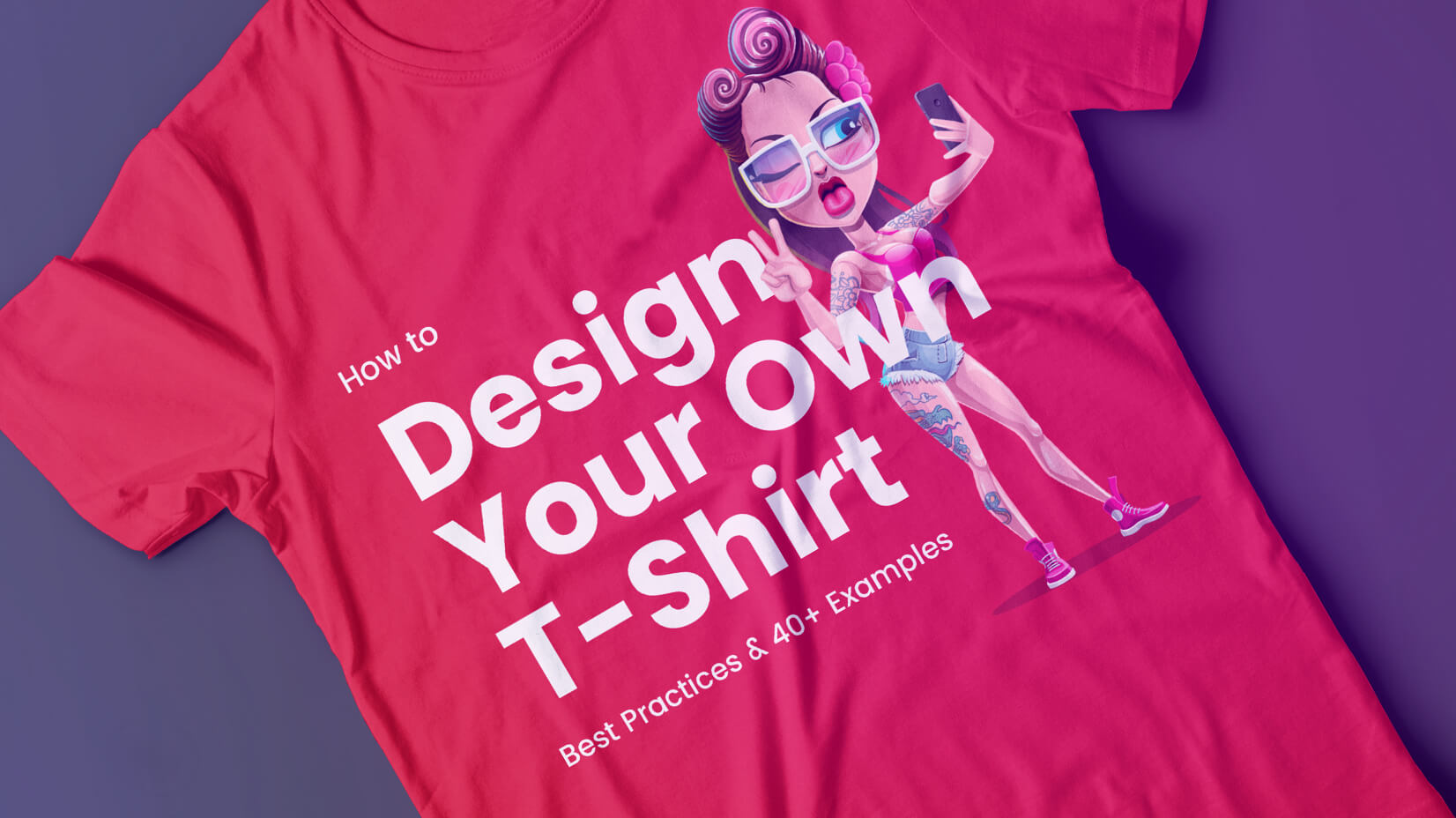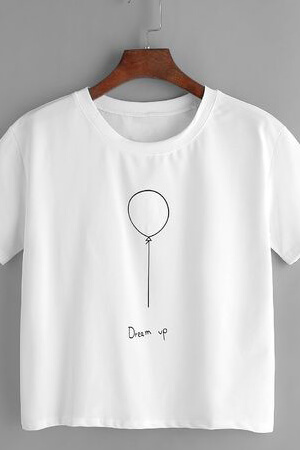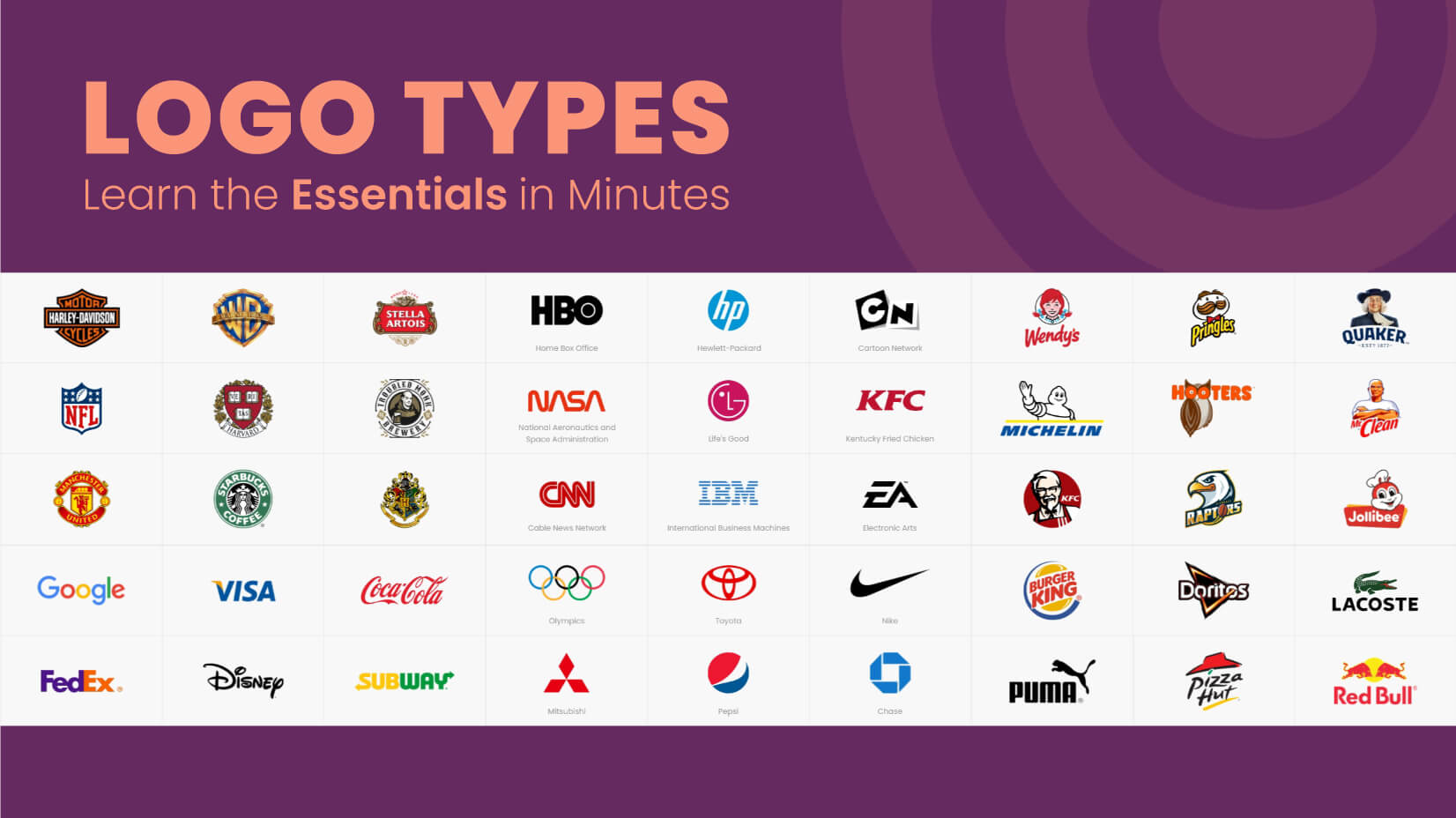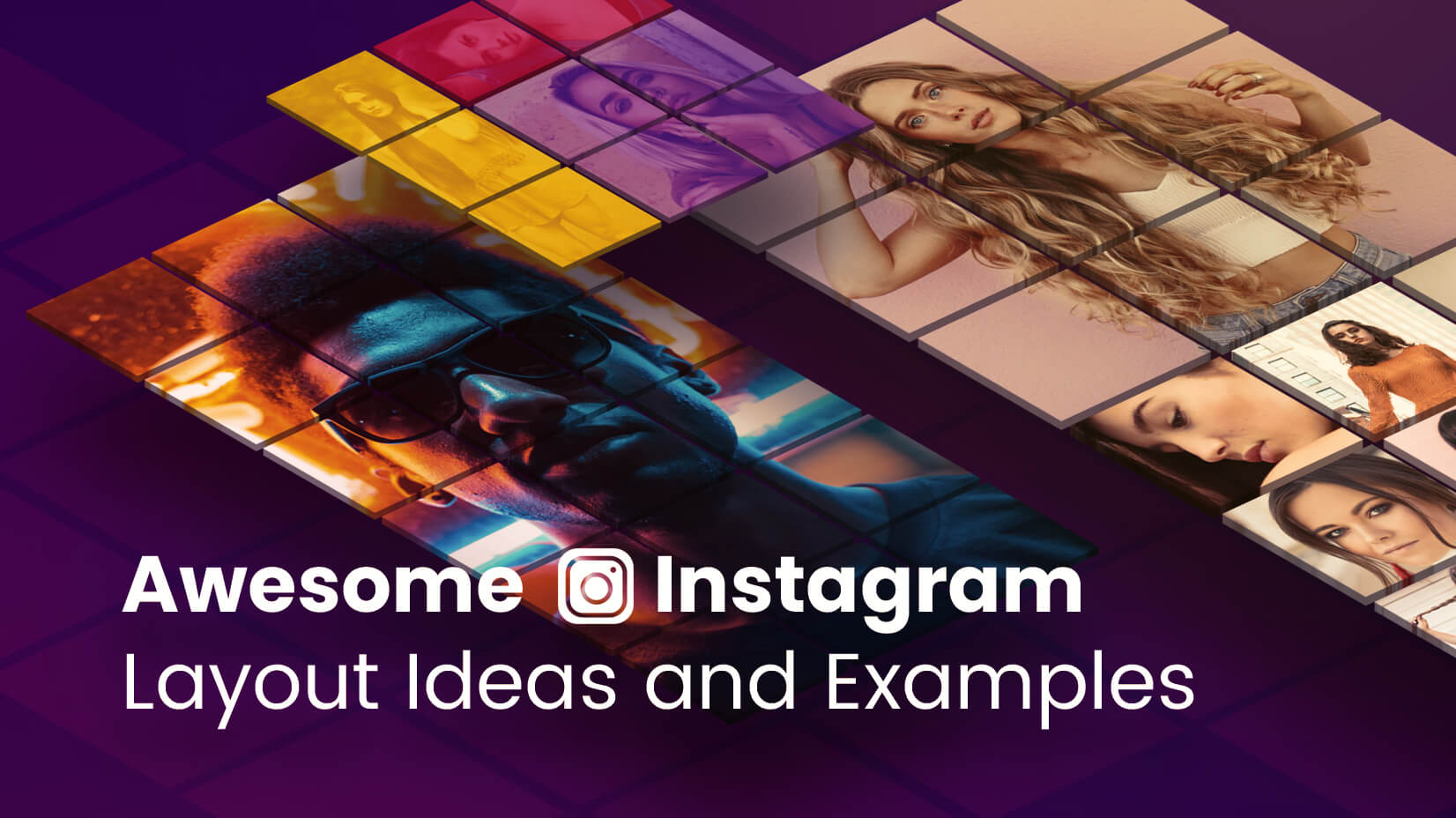
Have you had the urge to design your own T-shirt? This article will give you a major heads-up on where to start.
In today’s fashion world, everybody wants to be unique. But this turns out to be particularly hard with the mass clothing design production the big brands are releasing on the market. Luckily, with a little (or more) knowledge in the design field, you can easily design your own T-shirt that’s fully custom and personalized according to your taste.
Before wasting any more time, let’s go through the best practices and tips from the industry first and then see what kind of software you need in order to make your dream T-shirt design a reality.
Article overview:
1. Best practices and tips from the industry
1.1. Hunting for ideas and inspiration
1.2. Images
1.3. Typography
1.4. Colors
1.5. Composition
1.6. Size and position on the garment
2. Resources and tools to design your own T-shirt
1. Best practices and tips from the industry
1.1. Hunting for ideas and inspiration
Great designs start with great ideas. If you already have a clear idea of a T-shirt design you’ll be making, that’s perfect. But if you find yourself staring at a blank canvas, not knowing where to start, you should probably have to look for inspiration more actively.
It’s pretty obvious that your first several stops would be the most famous design-based platforms, such as Pinterest, Instagram, and Behance. Such platforms are basically fountains of inspiration and will load your creative mind with amazing visual ideas. But sometimes, inspiration may strike when you least expect it. And it won’t necessarily come from the screen.
When browsing for inspiration, you will find out that there are actually many different visual design styles that are good for a T-shirt: cartoony, minimalist, typography-based, photograph-based, vintage, etc. Browsing many designs will help you clear up the concept and get a good idea on the visual style you will be pursuing for your own design.
- illustrative / artistic
- cartoon
- doodling / simplified illustrations
- black and white drawings
- geometric
- negative space
- minimalist
- typography
- photographs and collages
And many, many more styles and combinations influenced by different trends in the fashion and design industry.
1.2. Images
Unless you are aiming for a typography-only print, your T-shirt design will have some imagery – be it photos, illustrations, or graphic elements, or a combination of several image types.
Now, the recommended image file type for a T-shirt design is vector (except photos), so you will never have to sacrifice from the quality. Vector image files can be scaled up and down without losing quality. This guarantees you a crisp clear design in the end. Want to learn the difference between vector and raster file formats?
The most popular vector file formats are AI, EPS, PDF, and SVG. They can be edited in vector-based software (such as Adobe Illustrator, Corel Draw, Affinity Designer, Sketch, etc.) on an online graphic maker which supports these files.
If you decide to go with a raster image, be it an illustration or a photo (photos are always raster), make sure that it comes in high-resolution and at least 200 dpi. You can edit such images with raster-based graphic software such as Adobe Photoshop, Affinity Photo and other similar software.
1.3. Typography
Typography, or in other words – the creative way in which your text is displayed in the design, plays a key role in any composition. The right choice of fonts and the really creative lettering can make a design very effective. But this is not the main reason typography designs are so very popular.
Typography, whether used as a primary or supportive visual element, make designs powerful in conveying messages. They make people relate to the design more easily because they use actual words designed in such a way that enhances its meaning.
It’s very important to match the choice of font with the visual design style of your T-shirt design. You will find many different fonts, each coming with their own vibe and suitable for different kinds of designs. There are elegant fonts, minimalist fonts, fun fonts, decorated fonts, and more. To keep the aesthetics of the design, the specialists suggest that you shouldn’t combine more than three different fonts in typography-based designs and more than two in image+text designs.
1.4. Colors
When it comes to using colors in T-shirt designs, the factors that determine your color choices go beyond color psychology. Indeed, it’s good to know the meaning of colors, especially if you are designing for a brand or a cause, but most importantly, you should know how to make colors work in favor of the T-shirt’s overall look.
This means, when you are creating the design, you have to comply it with the color of the garment it will be printed on. Better off, do not 100% decide on the fabric’s color before you’ve finalized your design. Basically, the rules are to keep up a good contrast, so the color of the tee complements your design. This means light-colored designs on dark-colored fabrics and vice versa. Multiple color designs look good on neutral color fabrics like black or white but they may be more pricy to print.
A possible backfire regarding the color factor would be the accuracy of colors in the printed version compared to the colors of the digital version. Sometimes, it’s hard to achieve the same color intensity or shade. Make sure to provide the printing studio with the actual color codes if you need a specific tone of color in the final version or ask them for assistance. Would you like to learn how T-shirt printing methods work?
1.5. Composition
Composition refers to the creative way in which all elements are arranged – text, images, ornaments. This is one of the most important factors regarding T-shirt design. When you arrange your design elements on the canvas, make sure not too spaced out, not too bunched up.
Determine the key elements of your design and keep the focus on them. Would this be a photo, an illustration, or something else – it depends on your design. When the key design element in your composition is a photo, it’s a common mistake to just leave it with its original edges. It’s a good practice to put a border on your photographs, a cool frame, use different “masks” to manipulate the edges, or completely remove the background if the essence of the picture allows.
When it comes to type, make sure the readability is good and the arrangement of type is adequate, so the text is read in the right order.
1.6. Size and position on the garment
The size of your design on the garment and the exact position could complement the design or make it look weird.
If the design is squarish, make sure to position it in the upper half of the printable area, so it falls on the chest rather than on the belly. The same goes for circle designs. Both tend to look better if they are sized in smaller than the standard size.
The rule is, if your design’s length and width are about the same or the design tends to be horizontal, position the composition it in the upper half of the printable area. The only exception for this rule is when you actually want to put an accent on the belly – for example, a pregnancy T-shirt design.
Rectangular and vertical designs can be positioned from the chest area down to the belly and they will look fine. Have in mind that you have to centralize your design not necessarily based on its width but centered visually. Some designs look great when they are left- or right- positioned.
If you want a little bit more unique garment, you can opt for alternative printing areas such as printing on the back of the tee.
Now that we’ve covered the basic rules of making a T-shirt design, let’s see what you need in order to make it happen. Of course, resources – graphic assets, images, fonts. And tools – to build the design itself.
2. Resources and tools to design your own T-shirt
Resources! There are literally a lot of websites offering free and premium visual assets – vectors, icons, brushes, design elements, backgrounds, photographs, photo effects, and a lot more. Whether you decide to go with premium or free assets, one thing you need to always check – the intellectual property rules. Especially if you are going to put your T-shirt design for mass sale. Either way, you need to make sure that you have the rights to use the assets you are downloading.
Related: Where to Find Free Vector Images for Commercial Use?
Tools! The choice of tools highly depends on the experience you have with professional graphic design software. Some of the most popular software choices of graphic designers for creating T-shirts are:
- Adobe Illustrator
A vector-based graphic software which is a part of the Adobe Suite. It is also the top choice of most graphic designers worldwide. The software works in vector format which is a perfect solution when your goal is to achieve a crisp clear T-shirt design. You will have to load your arsenal of resources with vector graphics (there are many free-to-use vector graphics on the web). You will be able to resize and modify the design as much as you need without losing any of its quality.
- CorelDraw
CorelDraw is a free and very popular alternative to Adobe Illustrator. In the software, you will find many of Illustrator’s features, so if you are on a budget, maybe this program will be a good start for you.
- Adobe Photoshop
Another famous program in the Adobe family. Adobe Photoshop is a raster-based program which means it is a perfect choice for editing photos. If you feel more comfortable using Photoshop for all your designs, make sure you create them in the maximum resolution and at least 200 dpi.
Online T-shirt design makers
Luckily for all enthusiasts who don’t have any experience with professional graphic design software and don’t intend to start using one, you can still design your own T-shirt by using online T-shirt design maker tools. Such online tools are a great place for beginners. They allow you to build your own design without having any pro graphic design skills. Now, basically, there are many T-shirt design tools on the market – some are quite simple and limited in features, and others – way more advanced allowing to experiment more. Our focus falls on the second category of online T-shirt maker tools. Here are several common features:
- intuitive and user-friendly interfaces;
- a library with graphic assets – icons, symbols, illustrations, graphic ornaments, pictures;
- premade T-shirt design templates;
- typography options – fonts and sizes;
- a function to upload your own assets – logos, graphics, characters, photos, etc.;
- identify the best position and size of the composition on the garment;
- choose an appropriate color and style of the garment;
And here are a few suggestions for online T-shirt makers that cover these requirements:
And if you’d like to go a little bit further and explore the possibilities to get a T-shirt printing machine for yourself, maybe you should start by researching the best printers for heat transfer on T-shirts.
Feelin’ ready to design your own T-shirt?
We hope we gave you a little bit of insight and loads of inspiration that will help you roll up your sleeves and make your dream T-shirt a reality. If you have any piece of advice on how to design your own T-shirt, we’d love to see your tips in the comments below.
You may also be interested in some of these related articles:



































































